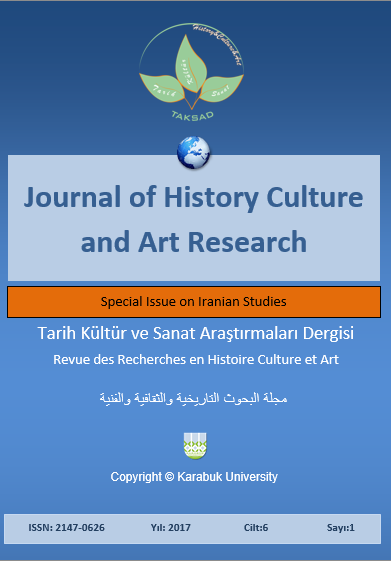Comparative Study of Post-disaster Reconstruction Paradigm and Iranian Experts’ Perspective of Reconstruction
DOI:
https://doi.org/10.7596/taksad.v6i1.745Keywords:
Post disaster reconstruction, Reconstruction paradigm, Iran.Abstract
Numerous natural disasters happen in the world annually and damages resulting from disasters and their consequences on development achievements are increasing in human communities. Hence, Post-disaster reconstruction has been developed in all aspects during the last years. The present article classifies the views of experts on post-disaster reconstruction and compares this reconstruction paradigm with the reconstruction process in Iran. This research has been conducted in the theoretical principles section of post-disaster reconstruction and is done in four steps: studying the views in post-disaster reconstruction field within a thirty-years period since 1982 to 2012; analyzing the views of the post-disaster reconstruction experts; deriving post-disaster reconstruction paradigm’s components using Grounded Theory method; and comparative study of post-disaster reconstruction paradigm and Iranian expert’s perspective of reconstruction by in-depth interviews with 10 Iranian expert who were involved in reconstruction in Iran during that period. The first part results include paradigms: Encouraging people for participation, individuals and groups participation, Procedural planning and Proactive management. Comparing these with Iranian’s experiences, shows that a systematic reconstruction plan should be based on recognition of local characteristics of region and the needs of the affected population besides the other results.
References
Barakat, Sultan (2003). Housing Reconstruction after Conflict and Disaster. London: Overseas Development Institute.
Cairns, Laura (2003). Post-war Reconstruction: Forever Re-inventing the Wheel? Royal Geographical Society, Outcome of a Dinner Discussion, July, pp. 1-10.
Collins, Andrew E. (2009). Disaster and Development, London: Routledge.
Drabek Thomas E. (1970). Methodology of Studying Disasters: Past Patterns and Future Possibilities. American Behavioral Scientist, 13(3): 331-343.
Drabek, T. E.; Tamminga, H. L.; Kilijanek, T. S. & Adams, C. (1981). Managing Multiorganizational Emergency Responses: Emergent Search and Rescue Networks in Natural Disasters and Remote Area Settings. Boulder: University of Colorado.
Drabek, Thomas E. & Key, William H. (1976). The Impact of Disaster on Primary Group Linkages. Mass Emergencies, 1(2): 89-105.
Dynes, Russell R. & Drabek, Thomas E. (1994). The Structure of Disaster Research: Its Policy and Disciplinary Implications. International Journal of Mass Emergencies and Disasters 12: 5-23.
El-Masri, Souheil & Kellet, Peter (2001). Post-War Reconstruction. Participatory Approaches to Rebuilding the Damaged Villages of Lebanon: A Case Study of al-Burjain. Habitat International, 25(4): 535-557.
Johnson, Cassidy; Lizarralde, Gonzalo; & Davidson, Colin H. (2006). A Systems View of Temporary Housing Projects in Post-disaster Reconstruction. Construction Management and Economics, 24(4): 367-378.
Minervini, Corrado (2002). Housing Reconstruction in Kosovo. Habitat International, 26(4): 571-590.
Navidi Majd, Fereshteh )2012). The Role of Social and Physical Issues in Post Disaster Reconstruction. Unpublished Interviews with Reconstruction Experts in Iran.
Olshansky, Robert B. (2005). How do Communities Recover from Disasters? A Review of Current Knowledge and an Agenda for Future Research. Presented in the 46th Annual Conference of the Association of Collegiate schools of Planning. Kansas City, October 27.
Olshansky, Robert B.; Johnson, Laurie A.; Horne, Jedidiah; & Nee, Brendan (2008). Longer View: Planning for the Rebuilding of New Orleans. Journal of the American Planning Association, 74(3): 273-287.
Satterthwaite, David (2011). Why is Community Action Needed for Disaster Risk Reduction and Climate Change Adaptation? Environment and Urbanization, 23(2): 339-349.
United Nations (1982). Shelter after Disaster: Guidelines for Assistance.
Victoria, Lorna P. (2002). Community Based Approaches to Disaster Mitigation. Proceedings—Paper Presented in Regional Workshop on Best Practices in Disaster Mitigation: Lessons Learned from the Asian Urban Disaster Mitigation Program and Other Initiatives. Bali, Indonesia, 24-26 September, pp. 269-290.
Downloads
Published
How to Cite
Issue
Section
License
All papers licensed under Creative Commons 4.0 CC-BY.- Share — copy and redistribute the material in any medium or format
- Adapt — remix, transform, and build upon the material for any purpose, even commercially.
Under the following terms:
Attribution — You must give appropriate credit, provide a link to the license, and indicate if changes were made. You may do so in any reasonable manner, but not in any way that suggests the licensor endorses you or your use.
- No additional restrictions — You may not apply legal terms or technological measures that legally restrict others from doing anything the license permits.







